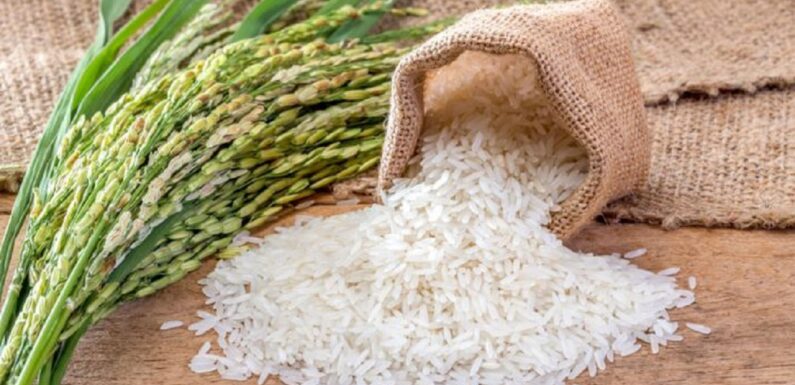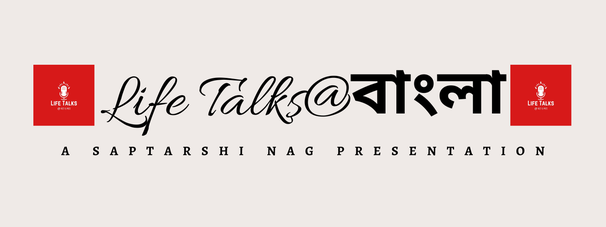
by MEHEDI HEDAYTULLAH
That was before the founding of Calcutta. It is known that Four Basak families and one Seth family crossed the Ganges from Shibpur, cleared the dense forest and formed a village that came to be called Gobindapur. (now the Garermath). There they cultivated fragrant rice to offer food to their deity, Govinda. That paddy later came to be known as Govindabhoga.
On the other hand, the famous fragrant rice of North Bengal is soft as cotton, hence its name may be Tulaipanji. Some say that paddy was cultivated on the banks of a river called Tulai. That’s why it is entitled Tulaipanji. However, not only Govindabhoga or Tulaipanji, the list of fragrant paddy of Bengal includes Badshabhog, Kataribhog, Radhatilak, Radhunipagal, Dudheshwar, Harinkhuri, Chinigura, Kalojira, Kalonunia, and many more. They compete with each other in taste and smell.
The fragrant rice of Bengal is also associated with our society and culture. Once upon a time, there was good farming. However, lagging in competition with high-yielding paddy, the area under desi fragrant paddy has been steadily declining since 1970. A lot of paddies are lost.
There are various theories and opinions about the naming of “Tulaipanji”. However, in undivided Dinajpur, many believe that the name Tulai Rice is due to the large-scale cultivation of Tulai Paja paddy on the high broken lands on both sides of the Tulai River. At present, the water of this river has dried up and the navigability of the river has been lost. No word for “Tulai” is available in the dictionary. However, a rice crop called Tulai or Tulasali is known which is very soft like fragrant cotton candy. Through the change in the phonetics of our language, the word Tulasali has been distorted into its present-day nomenclature. And the word paja means seed which is now a corruption of panja or Panaji.
Tulaipanji rice seeds are sown in the last week of July and the first week of August every year. That rice grows in mid-December. Tulai Panji is colorful and varied in the world of paddy just like the seasons of nature. Tulasi is also mentioned in Shunyapuran written by Pandit Ramai and Ramcharit written by Sandhyakar Nandi in 1100 BC.
Chief Minister Mamata Banerjee was so impressed with the quality of Tulaipanji rice that she continued to promote it in the style of ‘Brand Ambassador’. The state food department is wrapping it and selling the rice at the branding center. The people of the state can taste the fragrant rice at a slightly lower price than the market.
This fragrant paddy of North Dinajpur has been registered in June 2017 at the initiative of the Chief Minister as GI (Geographical Indication). However, this special paddy is not limited only to the boundaries of North Dinajpur. It is also cultivated in Kochbihar, Malda, and South Dinajpur in North Bengal. But nothing matches the variety produced in North Dinajpur for its fragrance. It is mainly cultivated in Raiganj, Kaliaganj, Hematabad, and Itahar blocks of North Dinajpur. However, its yield is much less than the demand.
Not only the Chief Minister but also those who have tasted Gobind Bhog in Burdwan or Tulaipanji rice in Raiganj in Uttar Dinajpur district have opined with utmost satisfaction that its taste is worth remembering for life. Tulaipanji takes place as gifts that Mamata Banerjee, the Hon’ble Chief Minister arranges for the guests from home and abroad. The state also sent Tulaipanji to the food festival of the London Olympics where it mesmerized the eaters with its aroma and special taste. From the very beginning, the Chief Minister has been emphasizing marketing along with increasing the production of this rice. Tulaipanji rice is occasionally available at various government fairs or government marketing centers like Sufal Bangla. The food department is planning to market the rice in an organized manner throughout the year.
According to the Agriculture Department, an average of 12,000 tonnes of Tulaipanji paddy is cultivated every year on a total of 7,000 hectares of land in Uttar Dinajpur district. Farmers work on making seedbeds throughout July. The work of planting saplings in the land starts in August. Paddy grows in mid-December. It costs is Rs 2,500 per bigha to cultivate Tulaipanji paddy while costs Rs 1,800 to Rs 1,900 for the cultivation of another paddy per bigha of land. Farmers get 1200 rupees per mana of paddy in different markets and bazaars of the district. By selling paddy per bigha, the farmers get a profit of five to six thousand rupees.
Tulaipanji Facts at a glance
_
Tulaipanji was first cultivated 400 years ago at Bindol
Its cultivation is being taken place at Raiganj, Hematabad, Karandighi, Kaliaganj, and Itahar blocks of North Dinajpur.
Tulaipanji rice of Mohiniganj is famous for its taste and aroma.
Tulaipanji is also cultivated in the Kushmondi block of South Dinajpur.
The Uttar Dinajpur district cultivates 12,000 tons of paddy on an average of 6,390 hectares of land every year.
To read the latest article in the immensely popular ‘Bhule Jawa Bangali’ Series, click here










Very interesting facts on Tulaipanji.
Tulaipanji… an unique identity of North Dinajpur….